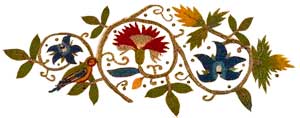 When Sander was a motherless girl named Kate Collins in the village of Saffron Walden, her Gran raised her and her younger brother Johnny in their earliest years. Though Kate hadn’t the patience to learn Gran’s healing skills, she thrived through her love and understanding. The closest she had to a friend was the vicar’s daughter Judith, but where Kate ranged free, Judith conformed to the propriety expected of girls. As they moved into their teens, Judith could imagine nothing better than being a wife; Kate nothing worse.
When Sander was a motherless girl named Kate Collins in the village of Saffron Walden, her Gran raised her and her younger brother Johnny in their earliest years. Though Kate hadn’t the patience to learn Gran’s healing skills, she thrived through her love and understanding. The closest she had to a friend was the vicar’s daughter Judith, but where Kate ranged free, Judith conformed to the propriety expected of girls. As they moved into their teens, Judith could imagine nothing better than being a wife; Kate nothing worse.
Gran, though warning her of the risks, gave Kate her brother’s clothes and helped her practice walking like a boy so that she could to spy on a group of traveling players rehearsing at the inn. When her father later ambushed her with an unwanted marriage, Kate had the clothes and behavior, thanks to Gran, to escape as Alexander Cooke.
Her plan was to go to sea, but a better course appeared: the players she’d met in her village, especially Jack, who played the female roles. She encountered the troupe on the road, in need of another player. As Alexander, her first friend was Jack, the only one of the company who knew her true identity. When in danger or need of aid, she found wise women along the road to similar to her Gran.
One of these lived in Stevenage: Rosa Frith who gave Sander hints for when she reached London. Rosa was the aunt of Moll Frith, who’d left Stevenage long before. When Moll gave Sander a bear hug early in their acquaintance and sensed her bound breasts beneath her doublet, their friendship began. Moll got a kick out of Sander’s disguise and never gave a hint.
As the previous post shows, Moll was a raucous outlaw known as the Roaring Girl. She could not have been more different from another of Sander’s early friends, Mary Sidney Herbert, the Countess of Pembroke, born to and married to nobility, and the most accomplished woman of the day. Subsequently Sander met Amelia Bassano Lanyer, the presumed Dark Lady of Shakespeare’s sonnets and later the first woman to publish a book of poetry in England. Then there’s Frances Field. Frances came to London from Leicester with nothing more than her skills at needlework. She found a seamstress who apprenticed her at her shop on London Bridge. When Gemma, her prentice master married, she helped Frances acquire the dressmaking shop and become one of Queen Elizabeth’s Silkwomen.
Of Sander’s friends, only Frances Field is fictitious. Commercially successful women existed in from mediaeval times: women who inherited their husbands’, fathers’, or prentice masters’ crafts and shops, including tailoring and dressmaking businesses. Queen Elizabeth I’s Silkwomen altered her French gowns or those given her as gifts, remade skirts and bodices, embroidered, and in general oversaw her extensive wardrobe. Frances and Sander struck up a friendship before Bedtrick begins and before Frances met Sander’s brother Johnny, who’d also come to London from Saffron Walden. Frances’ significance to the plot of this novel becomes evident from the early pages.
As for the notable Moll, the Countess, and Amelia: what better friends could a boy player, now a hired man, have in Shakespeare’s England? Except, of course, her deeper relationship with Frances Field, more similar to her than the others, apart from Sander’s male persona.
